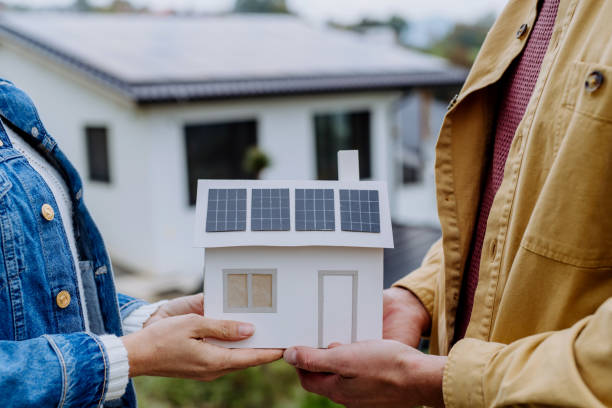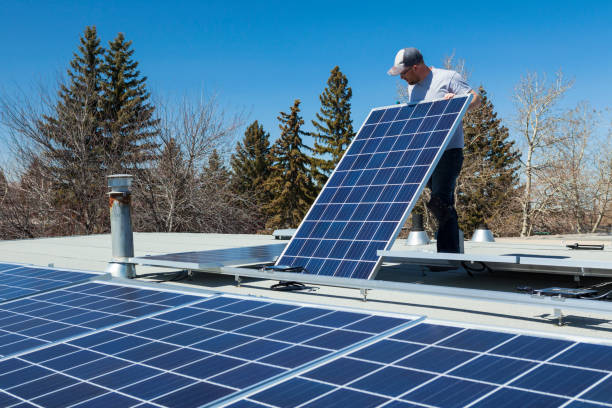Last update July 10th, 2024 at 06:19 pm
Everyone has to start somewhere so that is why we wrote this beginner’s guide to solar. If you are new to solar technology, you might have some questions about how it works, and what advantages you might expect.
Here is everything a beginner needs to know!
The basics: What is solar power?
Solar technology is making it possible for us to convert energy from sunlight into electrical energy, using photovoltaic (PV) panels. Through the photovoltaic effect, photovoltaic cells can generate an electric current from photons in the light.
You will be able to find three different types of solar panel technology in Australia; monocrystalline, polycrystalline and thin-film solar panels.
When it comes to efficiency, the monocrystalline solar panel is your best choice. At the same time, they can be expensive. Although polycrystalline and thin-film solar panels might be slightly less efficient, they cost less.

Beginners guide to different solar panel systems
You will be able to find several solar panel systems on the Australian market. These may differ from one another when it comes to technology, but also setup.
Grid-connected solar systems
Most Australians install a grid-connected solar panel system. This means that the solar panel system is connected to the grid, which makes it possible for you to buy electricity from the grid when your solar panel system is not producing enough power on its own.
This can be relevant in case of darkness or cloudy weather outside. If you need electricity during the night, you will buy it from the grid (like you did before you installed the solar panel system).
The solar inverter is intelligent and will make sure to first utilise solar power before power is used from the grid.
Beginners guide to off-grid solar systems
An off-grid solar system is not connected to the grid and will be your standalone power source. These systems include a battery for energy storage. When the system is producing more power than you use, the excess power will be stored in the battery for later use.
Off-grid solar systems might be a good idea for anyone living in remote places without any grid nearby. But if your system were to stop working, or you use all of the stored battery power, you will not have any backup power from the grid.
Beginners guide to hybrid solar panel systems
A hybrid solar panel system is grid-connected but also has a battery for energy storage. With backup batteries, you will be able to use solar power during the night, when the solar panel system is not producing power.
And if the battery is unloaded, you may use power from the grid. Although a hybrid solar panel system is very effective, the batteries are very expensive. The high cost makes the return on investment low. The lifetime of a typical battery is 10 years, and the payback time is said to be 20 years +.

Why should you go solar?
There are many good reasons to invest in solar panel technology. Let’s take a closer look at them!
1. Reduce your electricity costs
When installing a solar panel system, you will be able to significantly reduce your electricity costs. If you install a typical 6.6kW solar system, the system will be able to produce around 22.5 kWh of power every day.
If your household uses around 25 kWh of power a day, you will be able to save around $876 a year from reduced power consumption. This example is based on an electricity price of $0.25/kWh.
2. Receive payment for excess power (feed-in tariff)
In addition to lower electricity costs, you will also be able to receive a feed-in tariff if you have a grid-connected solar panel system. If the solar feed-in tariff is $0.07/kWh, you will be able to save around $472 a year based on the example above.
If we add the feed-in tariff savings and annual savings from self-consumption, you will save $1,348 in one year.
3. Reduce your carbon footprint
When installing a solar panel system, your system will produce green and clean power from a renewable source. In other words, you will be able to reduce your own carbon footprint.
What does home solar cost?
Installing a new solar panel system can be expensive. To make the investment more affordable for Australian homeowners, the federal government will give you a solar rebate.
After applying the rebate, the cost usually is somewhere between $5,500 and $8,000 for an average 6.6kW system. The exact price will depend on where in Australia you live. In some areas, you might even get a state rebate on top of the federal STC rebate.
Although the initial price is high, you will soon earn the investment back thanks to lower energy costs. In Australia, the average solar payback time is four years. Because of this, going solar is considered to be a good investment.